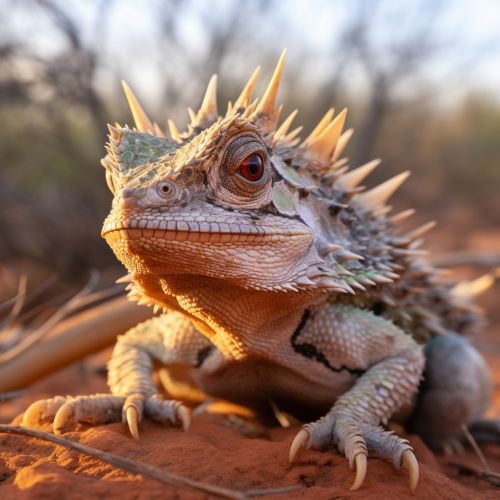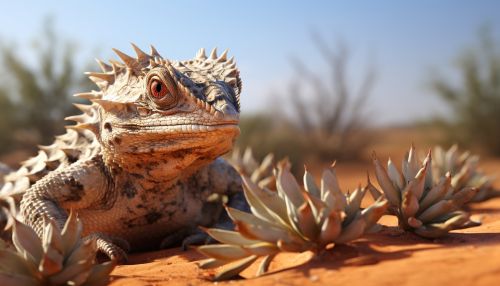Horned Lizard
Introduction
The Horned Lizard is a group of lizards known for their unique physical characteristics and behaviors. They belong to the family Phrynosomatidae, which is a diverse group of North American lizards. Horned lizards are often referred to as "horned toads" or "horny toads" due to their toad-like appearance, although they are not related to toads.


Description
Horned lizards are characterized by their flattened bodies and the row of horns on their heads. These horns are actually modified scales, which serve as a form of protection against predators. The coloration of horned lizards often matches the soil or sand in their specific habitats, providing them with excellent camouflage.
Distribution and Habitat
Horned lizards are native to North America, with their range extending from Canada to Guatemala. They inhabit a variety of environments, including deserts, grasslands, and forests. These lizards are particularly adapted to arid environments, with several species found in the deserts of the southwestern United States and northern Mexico.
Diet
Horned lizards primarily feed on ants, although they also consume other small invertebrates such as beetles and spiders. Some species are known to be specialist feeders on certain types of ants. The lizards' diet is a crucial aspect of their ecological role, as they help control ant populations in their habitats.
Behavior
Horned lizards are diurnal, meaning they are active during the day. They spend most of their time basking in the sun to regulate their body temperature. When threatened, horned lizards employ several defensive tactics. Some species are known to inflate their bodies to appear larger, while others can squirt blood from their eyes as a deterrent against predators.
Reproduction
The breeding season for horned lizards typically occurs in the spring. Females lay clutches of eggs, which they bury in the sand or soil. The number of eggs in a clutch varies among species and individual lizards. After hatching, the young lizards are independent and receive no parental care.
Conservation
Several species of horned lizards are considered threatened or endangered due to habitat loss and other human-related factors. Conservation efforts for these lizards include habitat preservation and captive breeding programs. Public education about the importance of these unique creatures and their role in the ecosystem is also a crucial aspect of conservation efforts.
